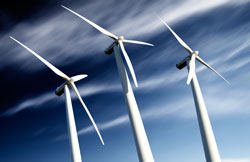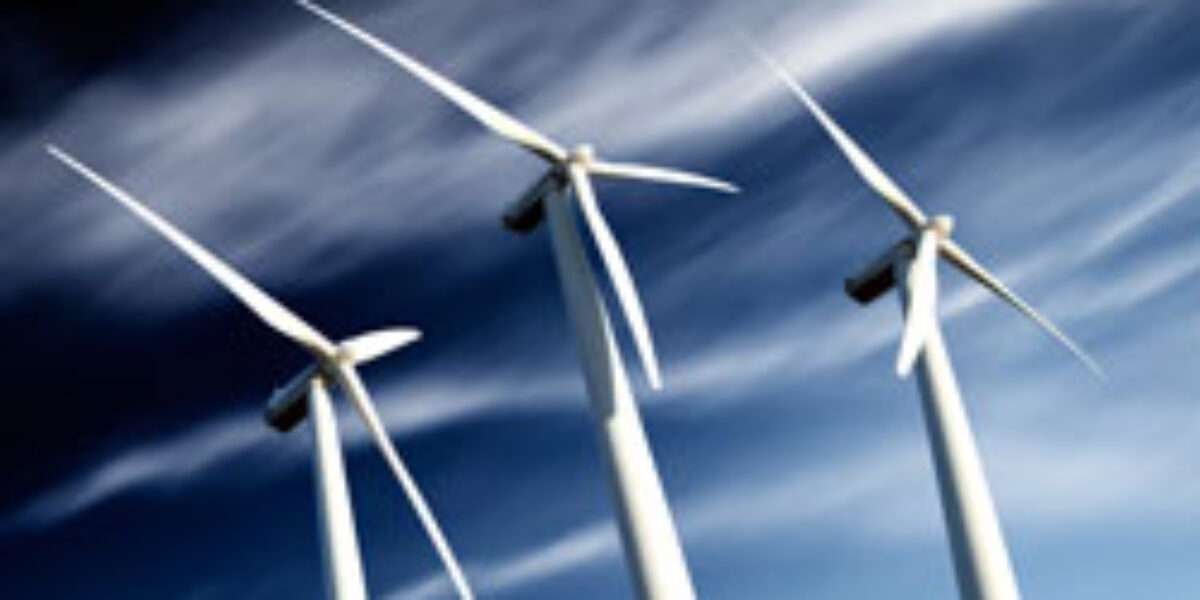Why invest in offshore wind energy?

With the EU’s goals to increase the use of renewable energy – to 20% of energy consumption by 2020, rising to 27% by 2030 – and global goals to cut carbon and fight climate change – offshore wind energy is a technology that is available and ready today to meet the climate and renewable energy goals of tomorrow. The European Union leads the world in offshore wind power with a total of 2,304 offshore wind turbines with a combined capacity of 7,343 MW fully grid connected in 73 wind farms across 11 different countries (July 2014 figures), but this is only the beginning of a major industrial development.
Offshore wind represents around 14% of the annual European wind energy market, up from 10% in 2012, and in 2013 the sector attracted €4.6 billion to €6.4 billion in investment. With this rising and considerable interest it is clear that offshore wind is already helping to revitalise European economies, in particular some maritime regions that were stagnating due to the decline of offshore oil and gas exploitation or the ship building industry.
Moreover, on a global level, offshore wind has given Europe a competitive edge through the benefit of being a first-mover and a world-leader in developing the technology. More than 90% of the world’s offshore wind capacity is installed in northern Europe, but other areas of the world – including China and the US – are interested in developing the industry. And, as an energy technology that is powered by wind blowing across European seas, it is an indigenous source of energy helping to free Europe from the shackles of dependence on imported, volatile fossil fuels.
At a time when Europe is at a major crossroads for its energy future – we know we must reduce our dependence on foreign energy, we must replace and extend our energy infrastructure and we must face up to climate change – offshore wind provides a powerful domestically-created answer to the crucial questions of security of supply, job creation and boosting commercial opportunities, as well as reducing carbon emissions in the energy sector.
Investment challenges
However, in recent years, the sector has suffered from unclear or conflicting political support, uncertainty surrounding grid connections and a lack of a stable long-term market and regulatory framework. Despite these challenges, both traditional and new investors seem optimistic and willing to invest in offshore wind. Power producers have traditionally been the sector’s main investors, but as the scale of investment grows balance sheets are no-longer sufficient, other investors are becoming increasingly active. Engineering procurement construction and installation companies, wind turbine manufacturers, pension funds, oil and gas companies and other corporate investors are already investing in the sector, alongside institutional investors, infrastructure funds and export credit agencies.
An increasing number of financial players have gained experience in offshore wind energy. With an increased understanding of the risks, appetite to invest in the sector is increasing.
Offshore wind energy is a powerful investment opportunity
Throughout the first half of 2014 there was considerable financing activity in the sector, including the largest offshore wind financing to close to date: the 600 MW Gemini project in the Netherlands which closed in May 2014 with a €2.8 billion transaction. Overall, while transactions remain complex and take time to close, there is an active market for offshore wind projects and a strong pipeline of new deals. Projects with a well-designed commercial and financial structure are able to find funding for construction or refinancing, allowing the sector to benefit from competitive capital costs.
To allow offshore growth to flourish, Europe needs to ensure a stable regulatory framework for offshore wind and develop its offshore grid connection capacity. Meanwhile, the sector itself urgently needs to work on reducing costs across the supply chain. With both an EU level, national government level and industry level effort, the required capital will be channelled into the sector.
Tackling the challenge of cost cutting, the EWEA Offshore 2015 event in Copenhagen from 10 – 12 March 2015, will seek to unite representatives of the entire offshore supply chain and attract high-level political and business attention. The knowledge-rich conference will address cost cutting through a broad range of topics from weather forecasting to installation logistics. One of the nine conference topics spanning 24 sessions is dedicated to costs and finance. Throughout the sessions under this topic, experts will impart their knowledge on the latest issues affecting finance and offer advice on the ways to invest in offshore. Industry leaders will be there to inspire the sector with their insight and to urge political leaders to put the right policies in place to afford the sector the stability it needs.
Meanwhile, the extensive exhibition halls at Copenhagen’s Bella Center will house international offshore wind energy players showcasing the latest technology and offering the opportunities to make new business connections. The exhibition is likely to contain the technological developments and innovative ideas that could help bring down the costs of offshore, leading to the offshore technology of the future.
Bright prospects
In its latest prediction, EWEA estimates that there will be a total of 23.5 gigawatts of offshore wind energy in Europe by 2020, up from 7.3 GW today. Both the EU’s decision-makers and the industry itself need to provide the right environment to achieve this, but the will and the investment interest are there. Offshore wind energy is both an energy for now and for the future, and a powerful investment opportunity.


